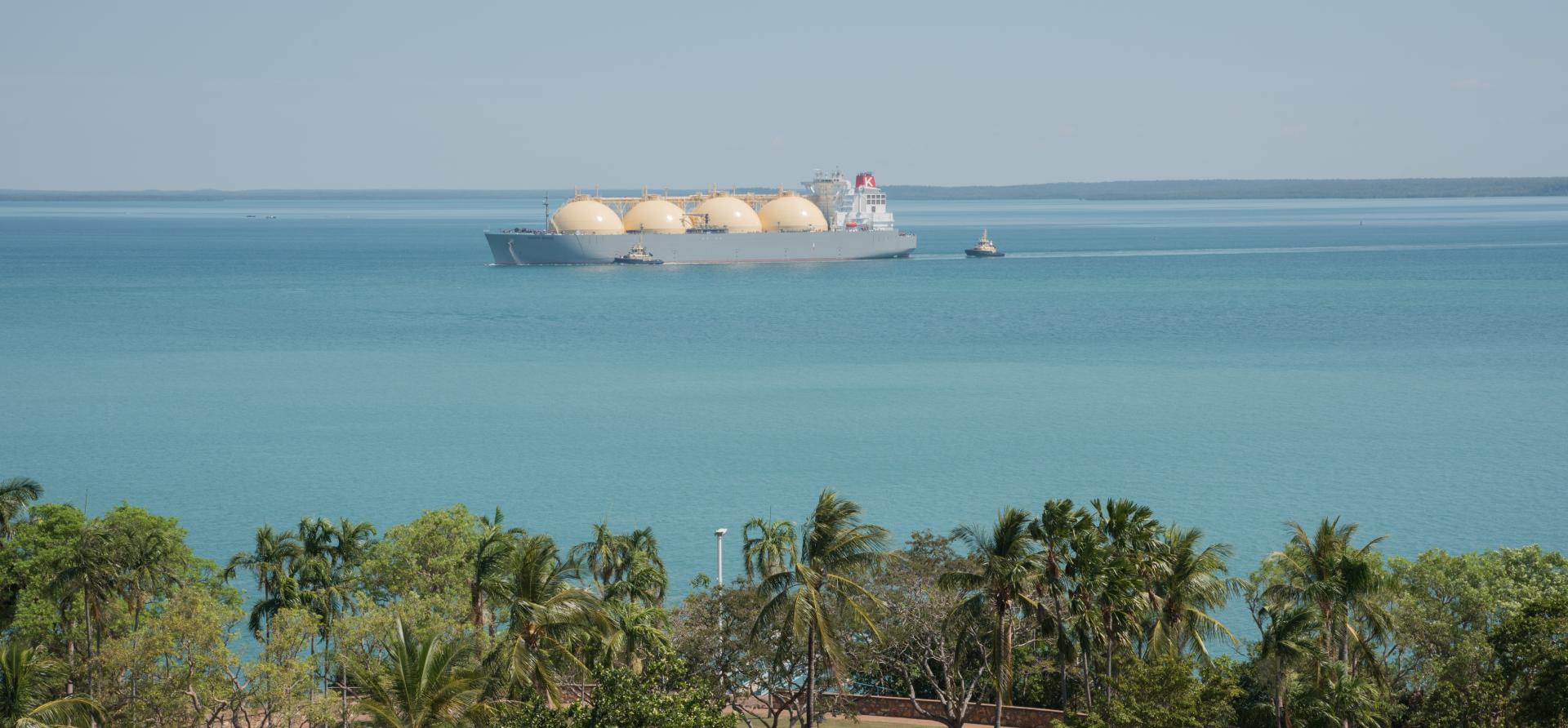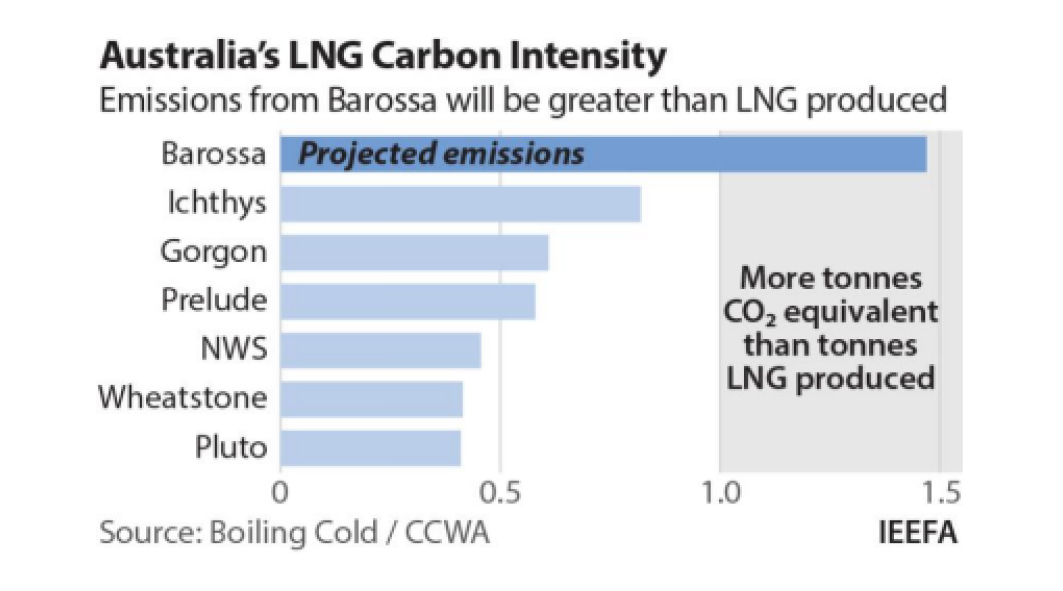Should Santos' proposed Barossa gas 'backfill' for the Darwin LNG facility proceed to development?
Download Full Report
View Press Release

Key Findings
Santos’ proposed Barossa to Darwin LNG development would be both a major financial risk and a serious climate risk for all if it were to go ahead.
This high-carbon gas resource is such a threat, both to the climate and to the shareholders who would be involved.
The proposed high carbon Barossa offshore gas development project 300km north of Darwin, Australia is intended to replace production from the Bayu-Undan field currently supplying dry gas to a liquefied natural gas (LNG) facility in Darwin.
The Barossa gas reservoir’s major owner and operator Santos has announced a final investment decision (FID) for this project. 1 It now says it will proceed to develop the gas reservoir.
The plan, initially developed by the previous operator, ConocoPhillips, is to ‘backfill’ the existing Darwin LNG plant with gas from Barossa when the LNG plant depletes its current Bayu-Undan gas supply in the next few years.
However, two major issues with this plan have been ignored. Santos’ proposed Barossa to Darwin LNG development would be both a major financial risk and a serious climate risk for all if it were to go ahead.

A high reservoir CO2 content is poison for plans to develop certain reservoirs for LNG production.
Barossa offshore gas contains a very high level of carbon dioxide (18 volume% CO2) – more than any gas currently made into LNG - which means it can never be responsibly made into acceptable LNG. Adding the venting and combustion emissions at the Darwin LNG plant (2.05 million tonnes of CO2 per annum) to the Barossa total offshore emissions of 3.38 million tonnes of CO2 per annum (MtCO2pa) gives a grand total of 5.4 MtCO2pa to produce 3.7 million tonnes of LNG per annum – extreme by any standard.
This makes the Barossa to Darwin project ‘a CO2 emissions factory with an LNG by-product’ – a truly questionable investment in a rapidly evolving market.
The Barossa to Darwin project is like a CO2 emissions factory with an LNG by-product.
Further risks and uncertainties have arisen with the recent award by Santos of a contract with BW Offshore for the floating production storage and offloading unit (FPSO) at Barossa. This includes the build and operation of this large and complex unit which alone will emit up to 3.8 MtCO2pa. BW Offshore have been successful in building and operating conventional, oil-producing FPSOs, but their current fleet averages a gas-handling capacity only one-tenth of that required for Barossa and with nothing like the complexity of processing for partial CO2 removal.
This paper explains what the Barossa proposal is all about and why this high-carbon gas resource is such a threat, both to the climate and to the shareholders who would be involved.















